Emergency remote education: A perspective of its potentialities and limitations in a Peruvian university
Abstract
This research aims to identify the potentialities and limitations of emergency remote education in the Peruvian university context as a consequence of the COVID-19 pandemic based on teachers’ experience of the Hermilio Valdizán National University (UNHEVAL). The type of this research was descriptive and the sample consisted of 123 teachers of the academic period 2020-I. For the data collection, a questionnaire was used, whose validation was made through the judgment of experts (0.96) and the reliability of the results through the Z-test. According to the results, flexibility stands out between the potentialities in regards to topics’ distribution, time, and the possibility to produce greater interest in the participants. It was observed that time flexibility is not considered as favorable unlike what was detected through literature. Infrastructure stands out, especially when is related to the connectivity and Internet access as well as the distractors produced by the easy access to devices and applications that are not related to the class session. The paper revealed weakness in the digital competencies of both teachers and students, and the scarce level of social interaction caused by social isolation. It is concluded that the potentialities and limits of emergency remote education in a Peruvian university are conditioned by different elements specific to each context or country and must be considered for the production of new educational proposals as a policy of prevention of the possibility of new events that require mandatory isolation.
Received: 1 July 2021
Accepted: 19 April 2022
Downloads
References
Ascayo, Orlando. 2015. “Herramientas tecnológicas y desarrollo de competencias tic en los docentes de ciencias de la educación”. Master’s thesis. UNHEVAL.
Bachelor, Jeremy. 2019. “El aula presencial, semipresencial, virtual e invertida: Un estudio comparativo de métodos didácticos en la enseñanza de L2”. Educación 43 (2): 1-20. https://www.redalyc.org/articulo.oa?id=44058158042.
Bozkurt, Aras, and Ramesh Sharma. 2020. “Emergency remote teaching in a time of global crisis due to CoronaVirus pandemic”. Asian Journal of Distance Education 15 (1): i-vi. http://www.asianjde.com/ojs/index.php/AsianJDE/article/view/447/297.
Bustamante, Roberto. 2020. “Educación en cuarentena: cuando la emergencia se vuelve permanente”. Aportes para el Diálogo y la Acción (1): 1-9. http://www.grade.org.pe/creer/archivos/Art%C3%ADculo-Roberto-Bustamante-parte-1.pdf.
Coeckelbergh, Mark. 2020. “The Postdigital in Pandemic Times: un comentario sobre la crisis de Covid-19 y sus epistemologías políticas”. Postdigit Sci Educ 2: 547-550. https://doi.org/10.1007/s42438-020-00119-2.
Cabrales, Antonio. 2020. “Prólogo”. In Enseñanza, edited by A. G. Antonio Cabrales. Learning Factor.
Charter, Richard A. 2003. “A breakdown of reliability coefficients by test type and reliability method, and the clinical implications of low reliability”. Journal of General Psychology 130 (3): 290-304. https://doi.org/10.1080/00221300309601160.
Dapozo, Gladys, Cristina Greiner, Raquel Petris, María Fernanda Piragine, Ana María Company, and María Espíndola. 2020. “Estrategias de evaluación formativa en la enseñanza de programación en modalidad remota de emergencia”. Congreso. Libro de actas de XXVI Congreso Argentino de Ciencias de la Computación. http://sedici.unlp.edu.ar/handle/10915/114458.
Dominguez-Lara, S., and G. Torres-Villalobos. 2020. “Aspectos éticos de la investigación mediada por internet: un recordatorio”. Educación médica 22: 231-232. https://doi.org/10.1016/j.edumed.2020.06.011.
Fernández-Regueira, Uxia, Adriana Gewerc, and Martín Llamas-Nistal. 2020. “El profesorado universitario de Galicia y la enseñanza remota de emergencia: condiciones y contradicciones”. Campus Virtuales 9 (2): 9-24. http://uajournals.com/ojs/index.php/campusvirtuales/article/view/731.
Ferri, Fernando, Patrizia Grifoni, and Tiziano Guzzo. 2020. “Online Learning and Emergency Remote Teaching: Opportunities and Challenges in Emergency Situations”. Societies 10 (4): 86. https://doi.org/10.3390/soc10040086.
Figallo, Flavio, María González, and Verioska Diestra. 2020. “Perú: educación superior en el contexto de la pandemia por el COVID-19”. ESAL 8. https://rcientificas.uninorte.edu.co/index.php/esal/article/view/13404.
Green, Jennifer, Marla Burrow, and Lucila Carvalho. 2020. “Designing for Transition: Supporting Teachers and Students Cope with Emergency Remote Education”. Postdigit Sci Educ 2: 906-922. https://doi.org/10.1007/s42438-020-00185-6.
Hernández, R., C. Fernández, and M. Baptista. 2014. Metodología de la investigación. McGraw Hill.
Hidalgo Apunte, María. 2021. “Reflexiones acerca de la evaluación formativa en el contexto universitario”. Revista Internacional de Pedagogía e Innovación Educativa 1 (1): 189-210. https://doi.org/10.51660/ripie.v1i1.32.
Instituto Nacional de Estadística e Informática. 2020. “Estadísticas de las tecnologías de información y comunicación en los hogares. Informe técnico trimestral enero-marzo 2020”. https://www.inei.gob.pe/media/MenuRecursivo/boletines/boletin_tics.pdf.
Leiva-Reyes, Karito, Aída Gutiérrez-Jiménez, Cecilia Vásquez-Rojas, Sandra Chávez-Lezama, and Enaidy Reynosa-Navarro. 2020. “Aprendizaje colaborativo en línea y aprendizaje autónomo en la educación a distancia”. Revista Científica Cultura, Comunicación y Desarrollo 5 (3): 95-100. https://rccd.ucf.edu.cu/index.php/aes/article/view/267.
Llamacponcca Román, Yolanda. 2019. “Entornos virtuales de aprendizaje y desarrollo de competencias digitales en los docentes”. Yachay Revista Científico Cultural 7 (1): 411-416. https://doi.org/10.36881/yachay.v7i01.93.
Martinez, C. 2019. Estadística y muestreo. ECOE Ediciones.
Ministerio de Educación. 2020, 1 de abril. “Orientaciones para la continuidad del servicio educativo superior universitario, en el marco de la emergencia sanitaria, a nivel nacional”, en el Decreto Supremo N.º 008-2020-SA.
Naciones Unidas. 2020. “Informe de políticas: La educación durante la COVID-19 y después de ella”. https://www.un.org/sites/un2.un.org/files/policy_brief_-_education_during_covid-19_and_beyond_spanish.pdf.
Ñañez, José, Juan Solano, and Edwin Bernal. 2018. “Actitudes y percepciones de los estudiantes, docentes y directivos sobre enseñanza y aprendizaje flexibles, e incorporación de TIC”. Ingeniería e Innovación 6 (1): 24-33. https://doi.org/10.21897/23460466.1538.
Ocaña-Fernández, Yolvi, Luis Valenzuela-Fernández, and John Morillo-Flores. 2020. “La competencia digital en el docente universitario”. Propósitos y Representaciones 8 (1): e455. https://doi.org/10.20511/pyr2020.v8n1.455.
Pardo, Hugo, and Cristóbal Cobo. 2020. Expandir la universidad más allá de la enseñanza remota de emergencia. Ideas hacia un modelo híbrido post-pandemia. Barcelona: Outliers School. https://outliersschool.net/wp-content/uploads/2020/05/Expandir_la_universidad.pdf.
Rosales, José, and Juan Cárdenas. 2021. “COVID-19, Educación y Resiliencia: una perspectiva desde la Gestión de Riesgos y el Desarrollo Sostenible”. Revista Docencia Universitaria 21 (1): 180-192. http://saber.ucv.ve/ojs/index.php/rev_docu/article/view/22608/144814488849.
Rosário, P., A. Pereira, J. Högemann, A. Nunes, M. Figueiredo, J. Nuñez, S. Fuentes, and M. Gaeta. 2014. “Autorregulación del aprendizaje: una revisión sistemática en revistas de la base SciELO”. Universitas Psychologica 13 (2): 781-797. https://www.redalyc.org/articulo.oa?id=64732221031.
Ruz-Fuenzalida, Carlos. 2021. “Educación virtual y enseñanza remota de emergencia en el contexto de la educación superior técnico-profesional: posibilidades y barreras”. Revista Saberes Educativos (6): 128-143. https://revistas.uchile.cl/index.php/RSED/article/view/60713.
Shim, Tae, and Song Lee. 2020. “College students’ experience of emergency remote teaching due to COVID-19”. Children and Youth Services Review 119: 105578. https://doi.org/10.1016/j.childyouth.2020.105578.
Tejada, José, and Karla Pozos. 2018. “Nuevos escenarios y competencias digitales docentes: Hacia la profesionalización docente con TIC”. Revista de curriculum y formación del profesorado 22: 25-51. https://recyt.fecyt.es/index.php/profesorado/article/view/63620/.
Vásquez, Daniel. 2020. “Ventajas, desventajas y ocho recomendaciones para la educación médica virtual en tiempos del COVID-19”. Rev. CES Med. especial COVID-19: 14-27. http://dx.doi.org/10.21615/cesmedicina.34.COVID-19.3.
Veselina, N., and D. Snejana. 2020. “Advantages and disadvantages of virtual and classical training experience gained from COVID-19 pandemic”. https://pesquisa.bvsalud.org/global-literature-on-novel-coronavirus-2019-ncov/resource/pt/covidwho-1361119.
Whittle, Claytón, Sonia Tiwari, Shulong Yan, and Jeff Williams. 2020. “Emergency remote teaching environment: a conceptual framework for responsive online teaching in crises”. Information and Learning Sciences 121 (5/6): 311-319. https://doi.org/10.1108/ILS-04-2020-0099.
Zamora-Antuñano, Marco, Juvenal Rodríguez-Reséndiz, Leticia Rodriguez, Miguel Cruz, José Altamirano, Wilfrido Paredes-García, and Hugo Rodriguez-Reséndiz. 2021. “Analysis of Emergency Remote Education in COVID-19 crisis focused on the perception of the teachers”. Sustainability 13: 3820. https://doi.org/10.3390/su13073820.
Authors are required to sign and submit a copyright transfer agreement after acceptance but before publication of their manuscript. To that effect, they receive, from the Managing Editor of Tuning Journal for Higher Education, a standard copyright assignment form designed along the following lines:
1. Authorship:
The author who signs the copyright transfer agreement must be the sole creator of the work or legally acting on behalf of and with the full agreement of all the contributing authors.
2. Copyright and Code of conduct:
a) Authors warrant that their work is original; has not been previously copyrighted or published in any form; is not under consideration for publication elsewhere; its submission and publication do not violate TJHE Ethical Guidelines for Publication and any codes (of conduct), privacy and confidentiality agreements, laws or any rights of any third party; and no publication payment by the Publisher (University of Deusto) is required.
b) Authors are solely liable for the consequences that may arise from third parties’ complaints about the submitted manuscript and its publication in Tuning Journal for Higher Education (TJHE).
c) Authors grant to the Publisher the worldwide, sub-licensable, and royalty-free right to exploit the work in all forms and media of expression, now known or developed in the future, for educational and scholarly purposes.
d) Authors retain the right to archive, present, display, distribute, develop, and republish their work (publisher's version) to progress their scientific career provided the original publication source (Tuning Journal) is acknowledged properly and in a way that does not suggest the Publisher endorses them or their use of the wortk.
e) Authors warrant that no permissions or licences of any kind will be granted that might infringe the rights granted to the Publisher.
3. Users:
Tuning Journal for Higher Education is an Open Access publication. Its content is free for full and immediate access, reading, search, download, distribution and reuse in any medium or format only for non-commercial purposes and in compliance with any applicable copyright legislation, without prior permission from the Publisher or the author(s). In any case, proper acknowledgement of the original publication source must be made and any changes to the original work must be indicated clearly and in a manner that does not suggest the author’s and or Publisher’s endorsement whatsoever. Any other use of its content in any medium or format, now known or developed in the future, requires prior written permission of the copyright holder.


1.jpg)
1.jpg)
.jpg)
1.jpg)
.jpg)
.jpg)









